Piecing Together the BirdScapes Puzzle for Western Yellow-billed Cuckoo
Once, the Colorado River roared mighty enough to sculpt the Grand Canyon. It poured more than 5.3 trillion gallons of water into the Gulf of California every year. Nurtured by its waters, riparian forests stretched far into the surrounding countryside along either bank of the river.
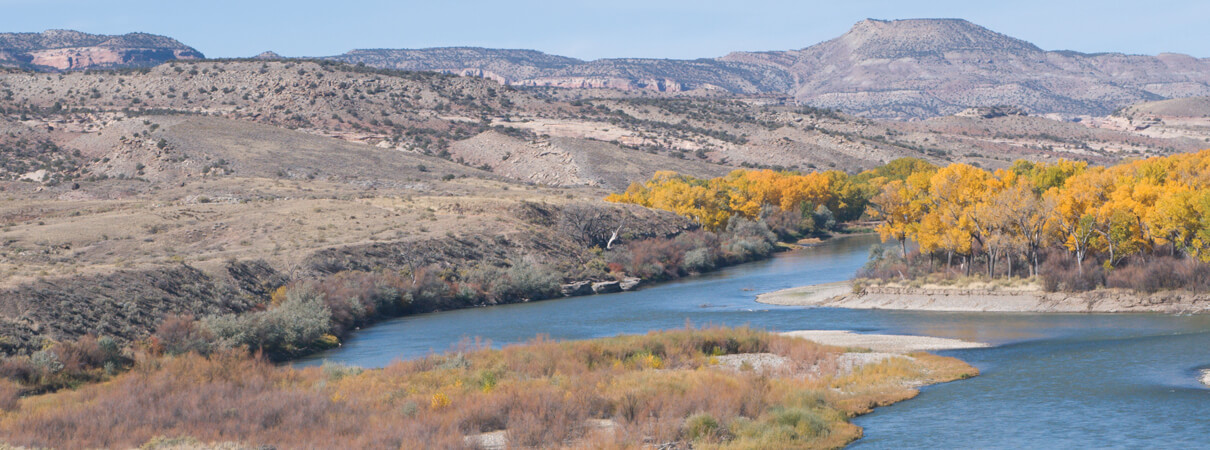
Riparian habitats along the Colorado River — shown here — and other southwestern rivers and streams have contracted significantly in recent decades. This loss of habitat presents challenges to Yellow-billed Cuckoos and other birds in the region. Photo by Linda Armstrong / Shutterstock
But the Colorado River has been tamed, its waters dammed and diverted and domesticated for human use. The river's once-wild waters now irrigate fields in California, fuel more than a dozen hydroelectric dams along its length, and fill drinking glasses for approximately 40 million people throughout the Southwest. The river is so heavily diverted that it often dries out completely before reaching its natural delta where Baja California joins the mainland. The river is literally being sucked dry.
In many ways, this is the story for every body of water throughout the Southwest. The mighty Colorado River might be the grandest of the mix, but every stream in the region tells a similar tale. “We've had such decimation,” says David Younkman, ABC's Vice President, Western Region. “Ninety-five percent of the streams in the Southwest have been destroyed or degraded.”
Watch List in the West
As the streams and rivers dry, their once-vast riparian forests contract closer and closer to their shores. Where cottonwood and willow once stood dense in mixed-age groves, now there is often nothing but salt cedar or worse — nothing at all. The consequences are felt at every level in the ecosystem, from the smallest insects to the birds that prey upon them and even the people who would watch those birds.
“There are more Watch List species in the West than in any other region of the continental United States,” says Younkman, referring to the list of priority-for-conservation bird species that is compiled every few years as a part of the State of the Birds report. “You can't take away all that habitat and expect the birds to remain.”
A Most Unusual Bird
Recently, one patch of southwestern riparian habitat has been restored to resounding success, explains John Stanek, a wildlife biologist with the Southern Sierra Research Station (SSRS) in California's Kern River Valley just south of the Sequoia National Forest. “The Bureau of Reclamation has started creating habitat along the Lower Colorado River. They planted more than 2,500 acres of cottonwood and willow — most of it in rows — and it worked better than anybody could have expected. It's been highly successful for Yellow-billed Cuckoos. It's the largest population of cuckoos in the state of California right now.”
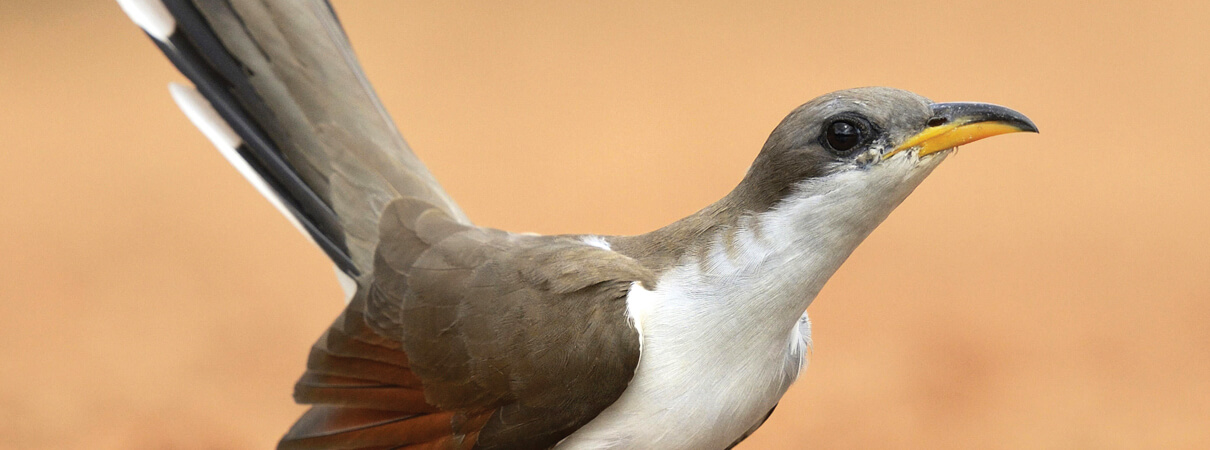
Yellow-billed Cuckoo by Rolf Nussbaumer Photography / Alamy Stock Photo
The Yellow-billed Cuckoo — a State of the Birds Watch List species that recently received Endangered Species list status for its western population — is a priority for both Stanek and ABC. The western population once nested as far north as southern Canada, but for reasons that are still not completely understood, has slowly contracted its summer range.
“We're seeing fewer and fewer cuckoos every year,” says Stanek, citing an 85 percent decline in western Yellow-billed Cuckoos in the Kern River Valley in just the past four years. “There is still habitat that looks good in Washington and Oregon and California; there just are not enough birds to populate all those areas anymore. The population is literally contracting toward the center.”
That decline will earn the species a place or two on ABC's BirdScapes map, just as soon as ABC and partners learn enough about the secretive birds to effectively identify lands for conservation. “The southwestern riparian system is being developed as BirdScapes in both California and the Arizona region right now,” says Younkman. “We have been working for quite a while in the region and have mapped out some of the best habitats. This stuff just takes a long time.”
Sign up for ABC's eNews to learn how you can help protect birds
"Elusiveness that Befuddles"
That “long time” can stretch even longer when dealing with a species like the western Yellow-billed Cuckoo. Put simply, these are unusual birds. They are polyandrous — the females may take multiple mates, abandoning first one and sometimes a second mate to care for their chicks while starting another nest with a new male. They breed quickly, fledging chicks just 15 or 16 days after laying the first egg in a clutch. And they migrate so gradually that they may ultimately require more protected stopover sites than many other migratory species.
“They sort of saunter,” says Younkman. “They will spend a few weeks in one place before moving on to the next stopover site. We think they're following food availability, the flush of insects.”
Added to this is an elusiveness that befuddles researchers and birders alike. Yellow-billed Cuckoos actively avoid detection. They will literally hide from observation if they detect a person nearby, says Stanek: “I've had standoffs with cuckoos.
Once, I sat there in the heat and I waited for an hour. That bird didn't move. I was tracking it with a radio antenna; I knew it was in the tree, but it just wouldn't move. I finally gave up. It was hot. I went down to have lunch. And as I was walking away, I swung the antenna back to where the bird was, and it was moving again. That bird was watching me watch it.”
Filling in the BirdScapes Map
Through ABC's new BirdScapes approach, at least two BirdScapes located the southwestern riparian system will ultimately contribute to the protection of western Yellow-billed Cuckoo. They are among many sites now in the planning phases.
In launching a BirdScape, the first question is always the same, explains ABC Senior Conservation Scientist, David Wiedenfeld: “Where are the birds?” From here, ABC and partners begin asking and answering the questions that will guide the placement of a BirdScape and dictate its ultimate conservation plan.
Additional factors are also considered, such as the location of current or potential partners, any political or financial limitations or opportunities, safety concerns, and any other factors that might impact the ability to implement effective conservation on the ground.
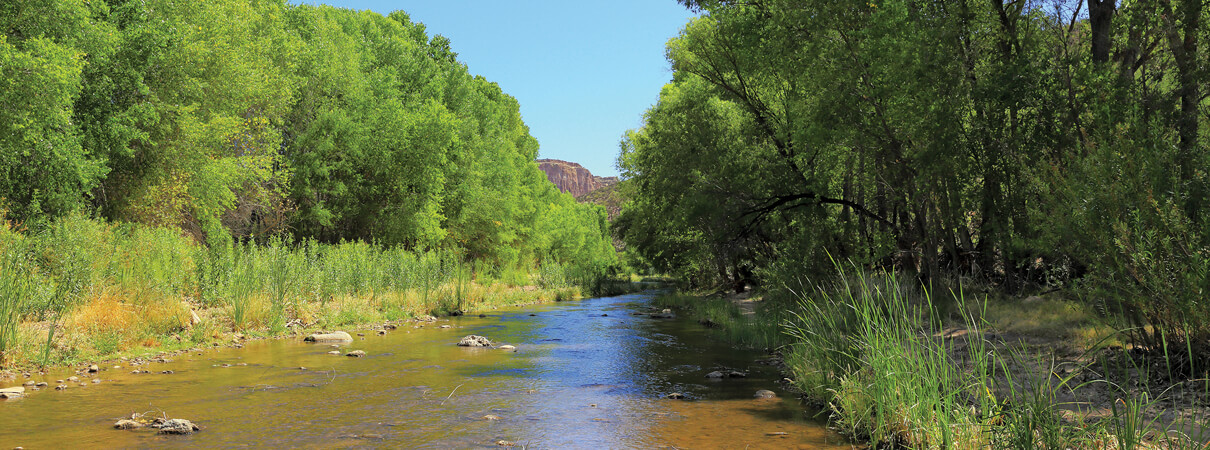
BirdScapes in the southwestern riparian system will ultimately contribute to the conservation of western Yellow-billed Cuckoo and other bird species. Photo of Aravaipa Creek, Arizona by Bill Florence / Shutterstock
“We start with biology,” says Wiedenfeld. “But there is also a lot of subjectivity. Why draw the boundary at this place rather than that place? Why include this particular area and not that one? What do we want to accomplish on this particular patch of land? Are there people interested in helping in this area?”
Even the simplest of those questions — Where are the birds? — is difficult to answer with a species like western Yellow-billed Cuckoos. “They're so shy and secretive,” says Stanek. “Unless you're specifically looking for cuckoos, you may not know they are there.”
In 2012, Stanek's colleagues, SSRS biologists Shannon McNeil and Diane Tracy, placed their first geolocators on the backs of several western Yellow-billed Cuckoos. The following year, they recovered just one with usable data. This was the first time SSRS had been able to look at the cuckoo's full migratory journey. In the five years since deploying those first geolocators — which use light levels to estimate a bird's location and can have a margin of error of hundreds of miles — Stanek's colleagues have switched to using GPS devices that actually record each tracked bird's exact location with an accuracy of a few yards.
What's Happening on the Wintering Grounds?
“We now know the cuckoos spend two months migrating, and that they winter in the Gran Chaco region of Bolivia, Paraguay, and Argentina,” says Stanek. “We had no idea. And that brings up the next point: We really don't know what's happening on their wintering grounds, where they spend six months of the year. That might be where conservation dollars have to go to preserve cuckoos in the United States.”
Cornell's citizen-science powered bird tracking platform — eBird — also helps. Birders and biologists alike can record their observations of Yellow-billed Cuckoos or any other bird they see. The data helps biologists refine range maps and better understand the seasonal movement of migratory birds. These observations support Stanek's concerns about a shrinking range for western Yellow-billed Cuckoos: “If you log on to eBird and look at the western Yellow-billed Cuckoo records for last summer alone, you'll see that the majority of those observations were in Arizona and New Mexico. There were just barely any observations anywhere else.”
On a quest for answers, McNeil and Tracy recently embarked on a months-long journey to visit the GPS data points collected from their tagged birds. “They're going to get a first-hand account,” says Stanek. “They're going to network with people and try to figure out what's going on down there.” The results from this journey may ultimately help ABC site one or more migratory or wintering-ground BirdScapes for the western Yellow-billed Cuckoo. (In the meantime, McNeil and Tracy will be posting updates from their expedition on the “Cuckoo Tracks” Facebook page.)
Beyond Data Points on the Map
Data points on a map are essential, but they are not sufficient. To effectively conserve western Yellow-billed Cuckoos and other migratory birds, ABC and its partners must identify the what as well as the where: What threats are these birds facing on their journeys? What speeds their decline or limits their recovery? What can be done to help?
This is where the puzzle of the western Yellow-billed Cuckoo currently sits. With the help of geolocators, GPS devices, and eBird data, biologists now know approximately where and when the birds can be found on a map of the Americas. To refine that knowledge and better understand fine-scale habitat use, Stanek and his colleagues use radio telemetry and color-coded leg bands to track and identify individual birds on their summering grounds.
“This allows us to track a bird without directly impacting its actions and movements,” explains Stanek. “From this, we are able to get territory sizes. We are able to find nests. We are able to see when a bird will leave the nest.” This is how SSRS biologists discovered female cuckoos' infidelity and mate abandonment. This is how they learned that the birds assess an area for habitat, food, and potential mates before settling down to a core territory. And, by comparing field observations with genetic analysis, this is how they discovered that it is the females who call to solicit mates — adding one more fact to the list of many that sets the Yellow-billed Cuckoo apart from most other migratory birds.
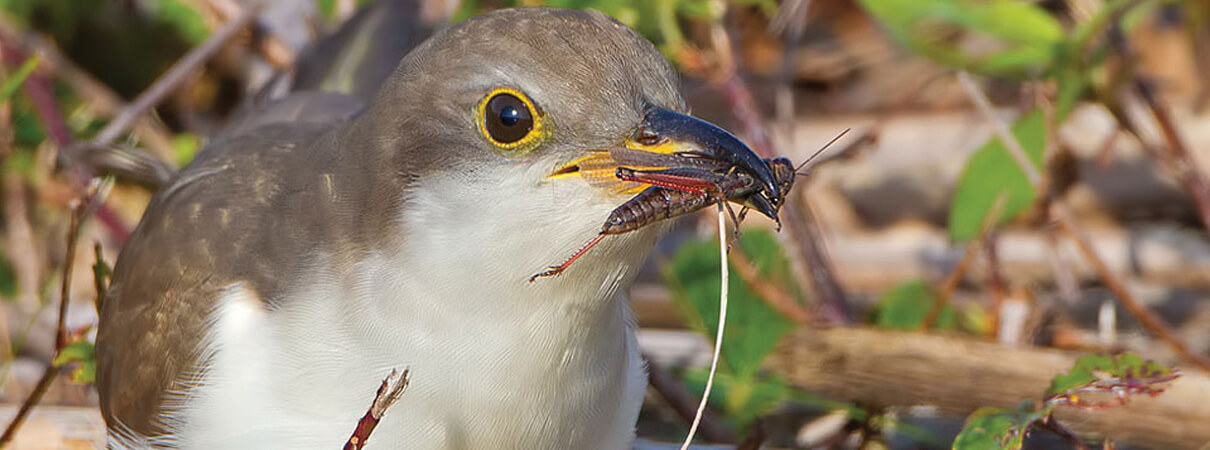
Yellow-billed Cuckoos feed on relatively large prey items, such as katydids, cicadas, caterpillars, and other large insects. Photo by Phillip R. Brown
What comes next? Stanek and many others are concerned about pesticides — especially the neonicotinoid pesticides that have proven to be fatal to bees (and which ABC research has established as toxic to birds). Specifically, they're concerned about potential impacts on western Yellow-billed Cuckoo food resources.
“They are a large prey item specialist,” says Stanek. “Large caterpillars. Katydids. Cicadas. Tree frogs. Lizards. But nobody studies caterpillars when they're studying cuckoos. We should be doing that, too.”
The question of pesticides is alarming, but also presents an area where ABC's BirdScapes may be most helpful, says Younkman: “Because BirdScapes are place-based, we can really get down to the specifics. A certain pesticide may be bad — lots of them are for birds — but the specific farming practices used in one county may be very different from another. So the way you address the pesticide use may vary by location. You can't do that at the national level. I have hope that, in some cases, the specificity of BirdScapes sites will allow us to move forward in a way that we might not be able to at a national level.”
Solving the Puzzle, One Piece at a Time
As of yet, the western Yellow-billed Cuckoo's map is still an incomplete puzzle. Some pieces have been clearly identified. Biologists know the habitat the cuckoos prefer for nesting and raising their fledglings, and even know how to effectively make more of it. But habitat is not enough. The birds also need food to eat and safe stopover sites and wintering grounds to sustain them during the nine months they are away from their nesting grounds.
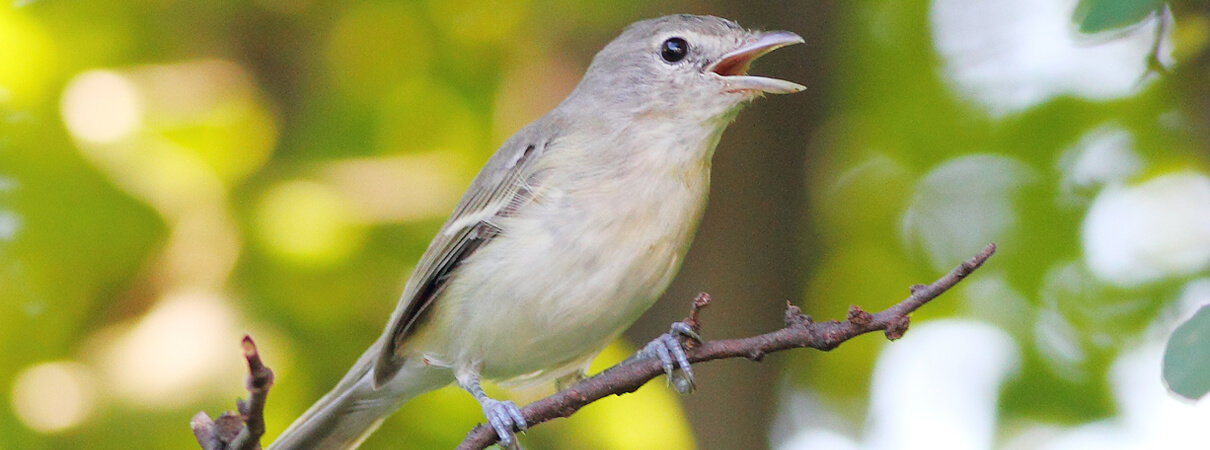
Riparian habitat throughout the southwest provides important habitat for a wide variety of other bird species, such as the Least Bell's Vireo shown here. Photo by Greg Homel
Younkman is optimistic. “We could be getting started in these BirdScapes this year.” But, he acknowledges it could also take longer. In addition to some lingering questions of biology and conservation — for example, habitat restoration projects work in some places, but not others — there are also questions of capacity and funding. “Somebody has to give us money,” he jokes. In the meantime, Younkman hopes to create more managed, suitable habitat for cuckoos on their breeding grounds, while simultaneously seeking answers about pesticides, migration, and wintering habitats.
“Planting trees and growing new habitat really worked for attracting cuckoos,” says Stanek, referring to the Bureau of Reclamation's Lower Colorado River Multi-Species Conservation Program's land restoration projects. “But what it really did was create an optimal area for bugs, for these large prey items. That was not a focus of the project — and it is still not entirely well understood because nobody went out and monitored and counted large insects — but you go out to these restoration areas at night, and it's deafening with the sound of insects.”
And perhaps this is the answer. Or, one of several. Restore habitat for the birds and their prey. Address issues of pesticide contamination where possible. Identify and protect several stopover and wintering sites. And continue to ask more questions and seek more answers.
One puzzle-piece of research at a time, the BirdScapes map for western Yellow-billed Cuckoos — and other species — will become clear.
 Cristina Santiestevan is an independent writer and editor committed to sharing stories about nature and conservation in today's world. She has written about the ecology of gardens, the myriad impacts of climate change and habitat loss, and the surprising conservation value of whale poop. Visit her blog at outlawgarden.com.
Cristina Santiestevan is an independent writer and editor committed to sharing stories about nature and conservation in today's world. She has written about the ecology of gardens, the myriad impacts of climate change and habitat loss, and the surprising conservation value of whale poop. Visit her blog at outlawgarden.com.


















































